What Are Dragon Fruits (aka Pitayas) and How Do You Eat Them?
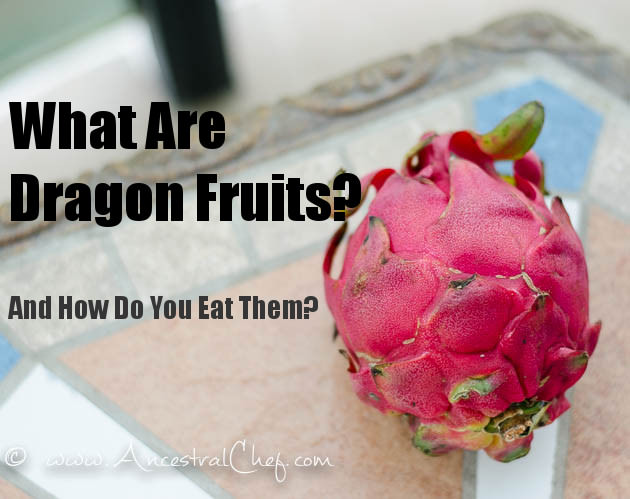
This is the second post about the exciting fruits I’m trying in Sanya, Hainan, China (often called the Hawaii of China for being a tropical island).
The first post was about Buddha’s Head Fruit (or Custard Apples), and this post is all about Dragon Fruits (or Pitayas).
What Are Dragon Fruits?
I’ve had dragon fruits before in the US (imported from Asia), and you can often find them in Asian supermarkets around the world (although dragon fruits are originally native to Mexico according to Wikipedia). In fact, dragon fruits are the fruit of certain cactus plants and these plants typically produce beautiful flowers that bloom at night.
What do dragon fruits look like? They are generally slightly larger than a softball (around twice the size of a tennis ball) and the most common varietals are dark pink on the outside when ripe with leaves sprouting up from the sides of the fruit (see photo below).
I suspect the name “dragon fruit” or 火龙果 (“fire dragon fruit” when translated from Chinese) originates from the fiery look of the fruit with the leaves making it look like it has dragon scales.

What are the different dragon fruit varietals?
There are 3 main varietals of dragon fruits (although there are a ton of other varietals).
1. Pink/Red skin, White flesh, and black seeds (see photo below). This varietal is known as Hylocereus Undatus or Pitaya Blanca.
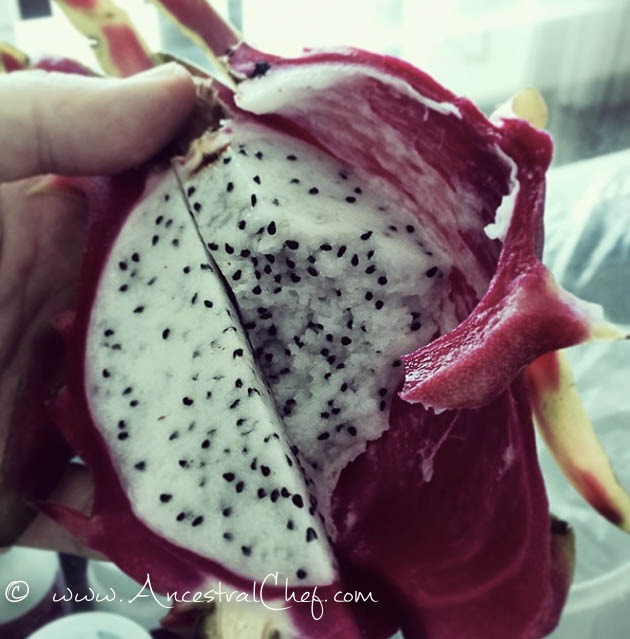
This is the type of dragon fruit that I see in the US Asian supermarkets generally. It has a very mild (almost herbal taste to it) – it’s not very sweet, but it also isn’t sour at all. The flesh is very soft and watery, and the black seeds are like sesame seeds in texture.
2. Pink/Red skin, Red flesh, and black seeds (see photo below). This varietal is known as Hylocereus Costaricensis or Pitaya Roja.
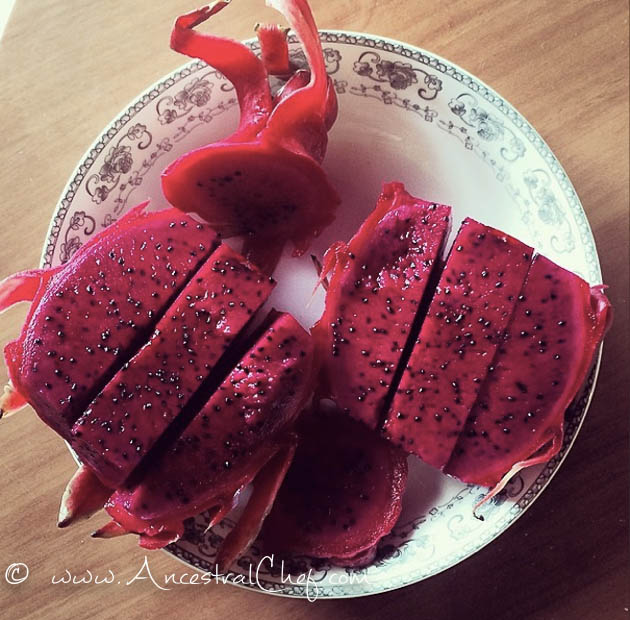
This is the type of dragon fruit I’ve been buying in Sanya, and it has a mildly floral flavor to it, although the texture and taste isn’t hardly any different to the white fleshed varietal.
3. Yellow skin, White flesh, and black seeds (see photo below). This varietal is known as Hylocereus Megalanthus or Pitaya Amarilla.
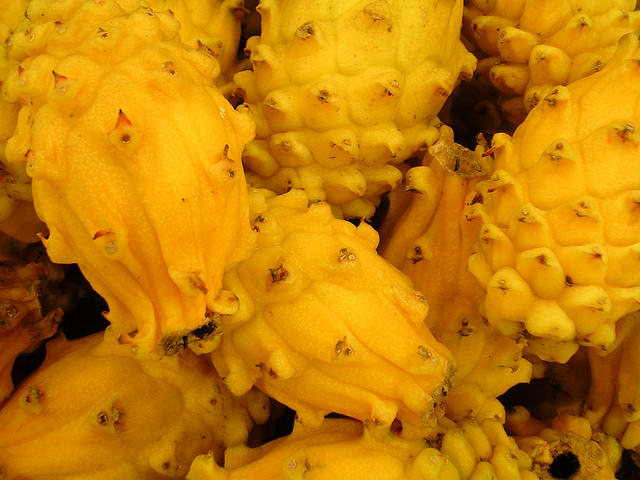 photo credit: kitakitts via photopin cc
photo credit: kitakitts via photopin cc
I haven’t tried these before, so if you have, please comment below to let me know what they tasted like and how you liked them as well as where you found them!
How Do You Pick a Ripe Red Dragon Fruit?
Look for ones that are bright red without blotches, and squeeze them gently (it should have a little give and not be super hard). I find that the leaves start to brown a bit when they’re ripe (as opposed to being green at the tips).
How Do You Eat a Dragon Fruit?
There are several ways to cut and eat a dragon fruit, and I’ve listed them below in terms of easiness. (I would always start by rinsing the dragon fruit to get rid of any dirt etc even though you don’t eat the skin – I know, I’m a bit paranoid about cleaning my fruits.)
1. Cut it in half and scoop with a spoon.
The flesh is really soft, so you can scoop it out pretty easily with a spoon. The seeds are edible (sort of like kiwi seeds).
2. Cut off the ends, then cut the dragon fruit in half and cut each half into thirds (see photos below).
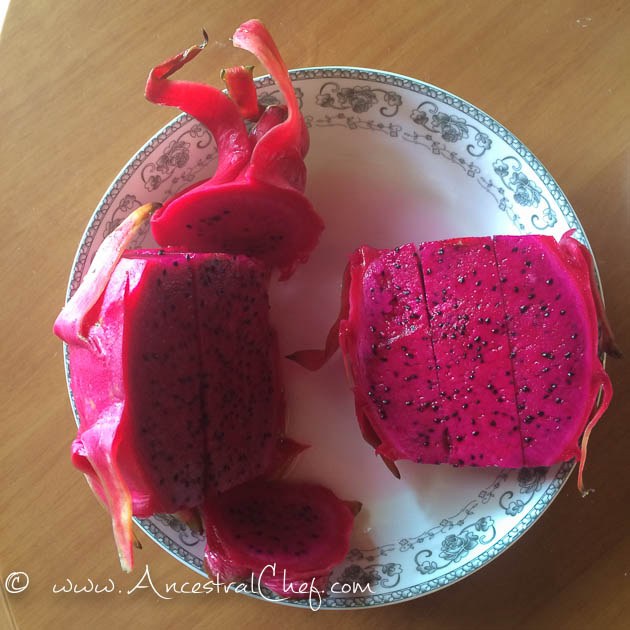
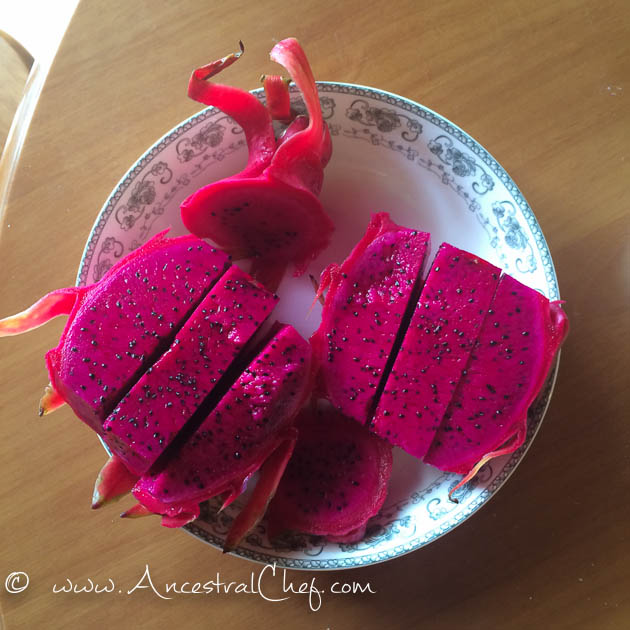
This probably my favorite way of cutting dragon fruits – it’s really easy, and you can just peel the dragon fruit flesh off the skin and eat it with your hands.
3. Cut into round slices and peel or peel and cut into round slices.
I think this method of cutting dragon fruits gives the prettiest presentation – so if you’re going for presentation, then I’d go for this method (although it definitely takes a bit more effort).
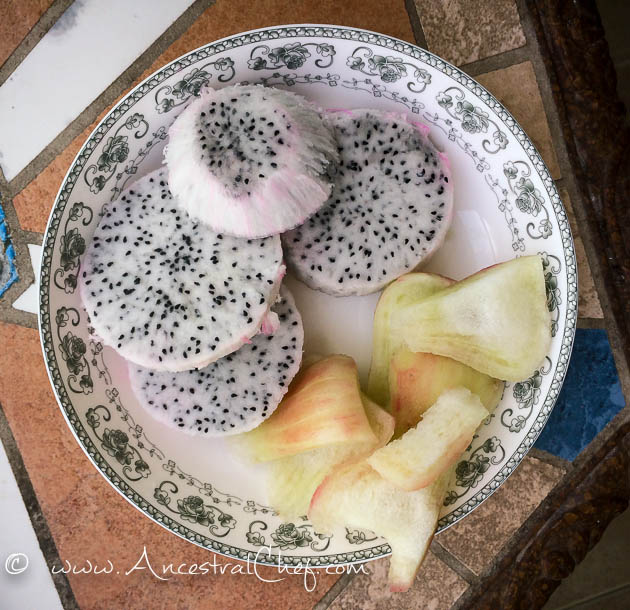
Pitaya Smoothies
Pitaya smoothies are getting really popular recently as they lend such a vibrant color to smoothies. In particular, the Pitaya Plus brand is selling packs of pitaya already pre-blended for you to add into smoothies. Check out this Berry Pitaya Smoothie Bowl for inspiration.
Nutritional Data for Dragon Fruits
I wasn’t able to find a verified source for the nutritional data for dragon fruits, but a few websites seem to suggest that each dragon fruit is approx. 50-60 calories with around 9-10g of sugar, 1-2g fiber, a lot of water, a little bit of fat and protein, and quite a bit of vitamin C.
There are some websites that suggest dragon fruits might be good for diabetics since they’re not very sweet, but I would personally still beware as each dragon fruit has 9-10g of sugar, even if it doesn’t taste like it. One person on this diabetics forum commented that they had heard it can still spike your blood sugar significantly. Sadly, I don’t have my blood sugar meter with me to test this out!
What Do You Think of Dragon Fruits?
Have you tried dragon fruits? Do you like them? Let me know in the comments below!


